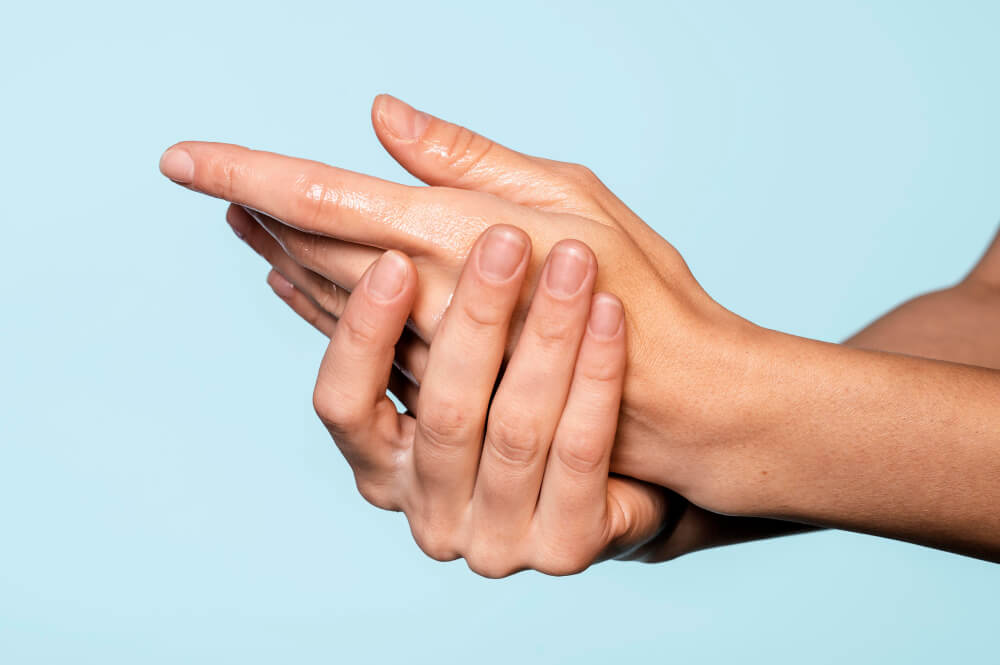Ulnar Nerve and Numbness in Fingers: Understanding the Cause and Finding Relief
Numbness and tingling in your fingers can be a disconcerting experience. While carpal tunnel syndrome often takes center stage when it comes to hand problems, the ulnar nerve can also be a culprit behind finger numbness. This article delves into the ulnar nerve, its role in hand function, how it can become compressed, the symptoms it causes, and most importantly, the treatment options available to regain feeling and restore hand function.

The Ulnar Nerve: A Crucial Pathway for Sensation and Movement
The ulnar nerve is one of the major nerves running through your arm and hand. It originates in your neck, travels down your arm, and branches out at the elbow to reach your hand. The ulnar nerve plays a vital role in:
- Sensation: It provides feeling to the pinky and half of the ring finger on the palm side. It also contributes to sensation on the back of your hand.
- Movement: The ulnar nerve supplies muscles that allow you to spread your fingers apart (abduction), bend your pinky and half of your ring finger (flexion), and make a fist (grip strength).
When the Ulnar Nerve Gets Pinched: Ulnar Nerve Entrapment
Ulnar nerve entrapment occurs when the nerve gets compressed, causing irritation and inflammation. This compression can happen at two main locations:
- Cubital Tunnel Syndrome: This occurs when the ulnar nerve is squeezed at the elbow joint, where it passes through a narrow tunnel called the cubital tunnel. Activities that put pressure on the elbow, such as leaning on it for extended periods, can contribute to this condition.
- Guyon’s Canal Syndrome: This less common type of entrapment happens at the wrist, where the ulnar nerve travels through a smaller canal called Guyon’s canal. Trauma, repetitive wrist movements, or swelling can compress the nerve in this location.
Risk Factors for Ulnar Nerve Entrapment
Several factors can increase your risk of developing ulnar nerve entrapment:
- Repetitive Activities: Jobs or hobbies that involve prolonged leaning on your elbows or repetitive wrist movements can put stress on the ulnar nerve.
- Fractures or Dislocations: Trauma to the elbow or wrist can damage the structures around the ulnar nerve, leading to compression.
- Arthritis: Degenerative joint changes in the elbow or wrist can narrow the tunnels through which the ulnar nerve passes.
- Fluid Buildup: Conditions like diabetes or repetitive strain injuries can cause swelling around the nerve, leading to compression.
- Obesity: Excess weight can put additional pressure on the ulnar nerve.
- Anatomical Variations: Some people have naturally narrower tunnels for the ulnar nerve, making them more susceptible to compression.
Symptoms of Ulnar Nerve Entrapment
The symptoms of ulnar nerve entrapment typically develop gradually and may worsen over time. Here’s what you might experience:
- Numbness and Tingling: This is usually the first symptom, affecting the pinky and half of the ring finger on the palm side. You might also experience tingling on the back of the hand.
- Weakness: Difficulty gripping objects or spreading your fingers apart due to weakness in the hand muscles controlled by the ulnar nerve.
- Claw Hand Deformity: In severe cases, long-term compression can lead to muscle wasting (atrophy) in the hand, causing a clawed appearance where the fingers curl inward.
Diagnosing Ulnar Nerve Entrapment

Diagnosing ulnar nerve entrapment typically involves a physical examination by your doctor. They will assess your hand function, sensation in your fingers, and any tenderness around the elbow or wrist.
Additional tests might include:
- X-rays: To check for any fractures or dislocations in the elbow or wrist.
- Electromyography (EMG) and Nerve Conduction Velocity (NCV) Studies: These tests measure the electrical activity of the muscles and nerves to assess the severity of nerve damage.
Treatment Options for Ulnar Nerve Entrapment
Treatment for ulnar nerve entrapment aims to relieve pressure on the nerve and prevent further damage. The approach typically starts with non-surgical methods and progresses to surgery if conservative measures fail.
Non-Surgical Treatment Options
- Rest and Activity Modification: Avoiding activities that aggravate the condition and taking breaks from repetitive tasks is crucial.
- Splinting: Wearing a splint at night or during certain activities can help keep your elbow or wrist in a position that relieves pressure on the nerve.
- Anti-inflammatory medications: Over-the-counter pain relievers like ibuprofen or naproxen can help reduce inflammation and pain.
